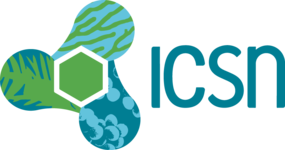Lead:
Objectives :
The aim of the project is to characterize the efficacy of a set of strains able to be used for waters and/or soils contamination, a sort of turnkey approach from the producer to the user.
Validation of WP1 fungal short list at 1L scale
According to the prioritization step in WP1, a shortlist of 8 efficient strains (2 per target compound) will be investigated for scale-up of the production. The first step will be the reproduction of the WP1 result and its transposal to 1L scale.
High throughput optimization of culture media and conditions
This optimization will be done by working on nutritional profiles (C/N sources and rates) – abiotic factors (salinity, temperature, oxygen, pH, agitation) – iterative cultivation protocols to enhance potential biodegradation activities. In this task, we will address the appropriate storage and conditioning operations of the biomass to be used for the biodegradation of the target pollutants. Indeed, the integrity and biodegradation efficacy of the strain should be stable. Handling and storage should be as simple as possible. We will also optimize the cultivation media and condition in order to rationalize the biomass production cost.
The most promising isolates will be selected for repeating culturing on media containing HNS as unique carbon sources. The aim here is to constrain the adaptation of the microorganisms and to assess whether HNS degradation is higher after several iterations, as previously revealed for complex compounds such as cellulose. Iterative culturing, ~50 iterations per isolate and per HNS, will be processed in 96-wells microplates to allow growth parameters characterization using Laser Nephelometry. For each 5 iterations, fungal growth curves will be analyzed to highlight any significant changes in growth rates as a proxy for constrained adaptation of microorganisms.
Scale up to 20L fermenter and validation of protocols by crossed analysis of targeted activities (biosurfactants or biodegradation)
In this task, we will scale up the cultivation to 20L fermenter. This step is mandatory to ensure the industrial transfer to higher cultivation capacities. We will engage this step for 5 strains, the 4 HNS degrading strains previously selected and the best producer of surfactant identified in WP1.
Innovative extraction technologies of surfactants using green chemistry methods
One of the crucial steps in surfactant production by fungi is the separation between the medium and mycelium. The driving idea is to reduce to the minimum the use of organic solvents in liquid-liquid extraction processes, which requires high volumes of harmful solvents. To do so, we will engage different techniques based on the density difference (centrifugation), as well as solid phase extraction.
Innovative cultivation technologies exploring cutting-edge immobilization and compartmentalization techniques according to targeted environmental bioremediation solutions
This task is highly challenging and aims to separate physically the medium from the mycelium during the cultivation step.
Integration of the process steps from a TRL3 to TRL5 technology suitable for future industrial exploitation
Based on the combination of the different results and improvements obtained from WP3, a TRL5 process will be set and validated.
D3.1: First step scale-up to 1L fermentation and optimization of protocols for industrial scale (TRL5).
D3.2: Cultivation transfer from 1L to 20L fermenter.
D3.3: Innovative extraction technologies of surfactants using green chemistry methods.

